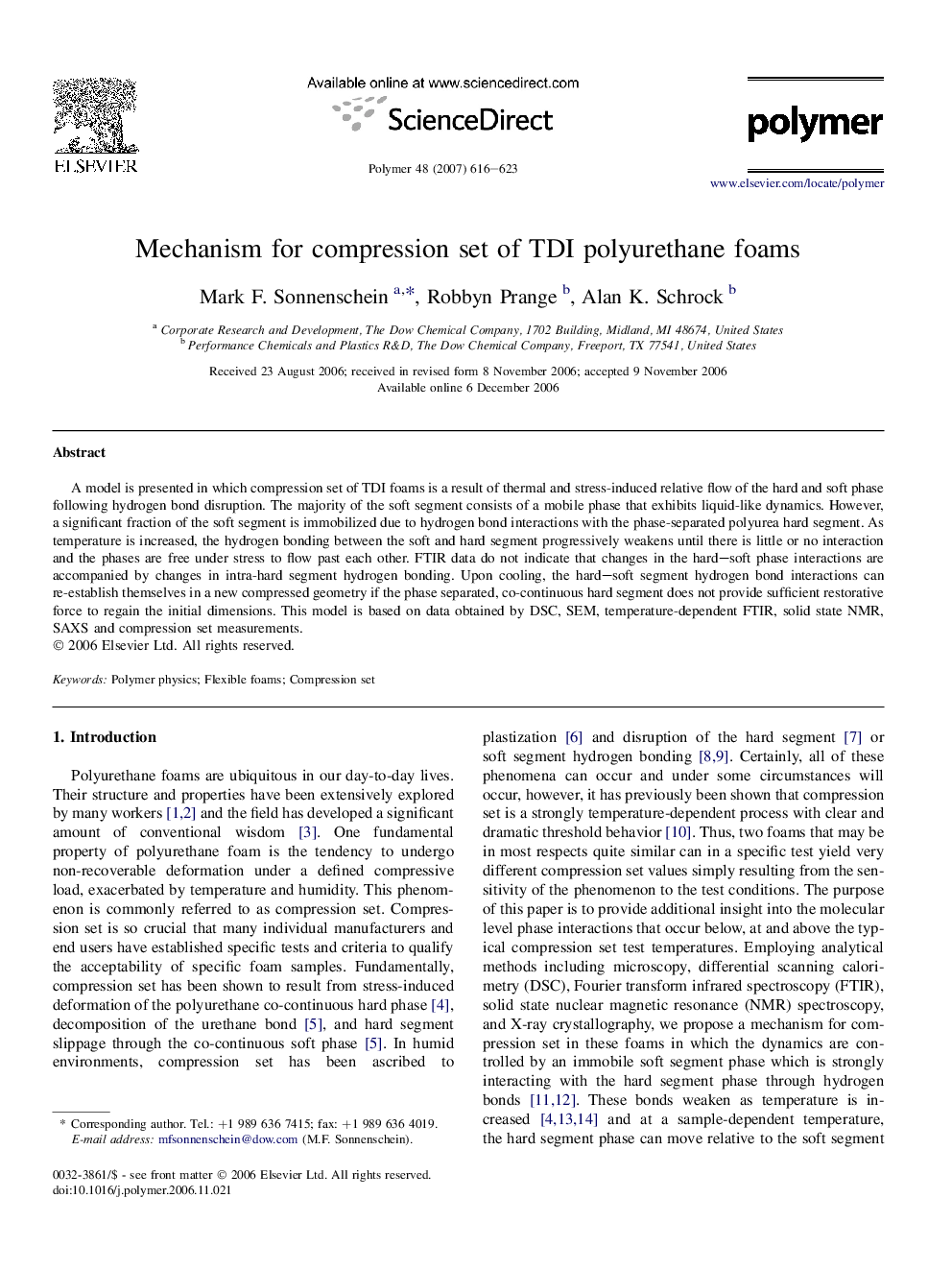| Article ID | Journal | Published Year | Pages | File Type |
|---|---|---|---|---|
| 5186403 | Polymer | 2007 | 8 Pages |
A model is presented in which compression set of TDI foams is a result of thermal and stress-induced relative flow of the hard and soft phase following hydrogen bond disruption. The majority of the soft segment consists of a mobile phase that exhibits liquid-like dynamics. However, a significant fraction of the soft segment is immobilized due to hydrogen bond interactions with the phase-separated polyurea hard segment. As temperature is increased, the hydrogen bonding between the soft and hard segment progressively weakens until there is little or no interaction and the phases are free under stress to flow past each other. FTIR data do not indicate that changes in the hard-soft phase interactions are accompanied by changes in intra-hard segment hydrogen bonding. Upon cooling, the hard-soft segment hydrogen bond interactions can re-establish themselves in a new compressed geometry if the phase separated, co-continuous hard segment does not provide sufficient restorative force to regain the initial dimensions. This model is based on data obtained by DSC, SEM, temperature-dependent FTIR, solid state NMR, SAXS and compression set measurements.
